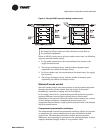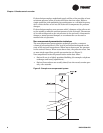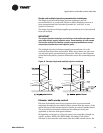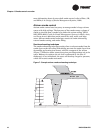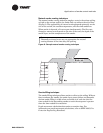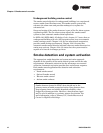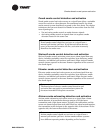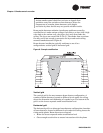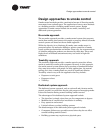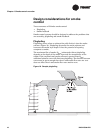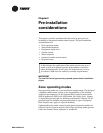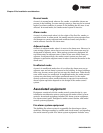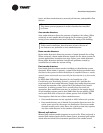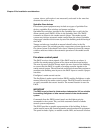
Design approaches to smoke control
BAS-APG001-EN 15
Design approaches to smoke control
Smoke control methods provide a mechanical means of directing smoke
movement in an enclosed space. The application of one or more methods
to a building provides a building smoke control system. Design
approaches to smoke control include the no smoke, tenability, and
dedicated system approaches.
No-smoke approach
The no-smoke approach provides a smoke control system that prevents
smoke from coming into contact with people or property. Almost all smoke
control systems are based on the no-smoke approach.
While the objective is to eliminate all smoke, some smoke occurs in
protected spaces. By molecular diffusion, minute quantities of smoke
travel against pressurization and airflow. These very low concentrations
of airborne combustion products are detected by their odor. These and
higher levels of diffused contaminants may not result in high-risk
conditions.
Tenability approach
The tenability approach provides a smoke control system that allows
smoke to come into contact with occupants. However, in this approach,
the smoke control system dilutes the by-products of combustion before
they come into contact with people. In atria applications, the natural
mixing of air into a smoke plume can result in significant dilution.
Tenability criteria vary with the application but may include:
• Exposure to toxic gases
• Exposure to heat
• Visibility
Dedicated system approach
The dedicated system approach, such as stairwell and elevator smoke
control, provides a system that has the sole purpose of managing smoke.
It does not function during normal building comfort control.
The advantages of the dedicated system approach include:
• The interface is simple, since there are few components to bypass.
• Modification of controls after installation is unlikely.
• Easy operation and control.
• Limited reliance on other building systems.
The disadvantages of the dedicated system approach include:
• Component failures may go undiscovered since they do not affect
normal building comfort control.
• Building systems may require more physical space.



